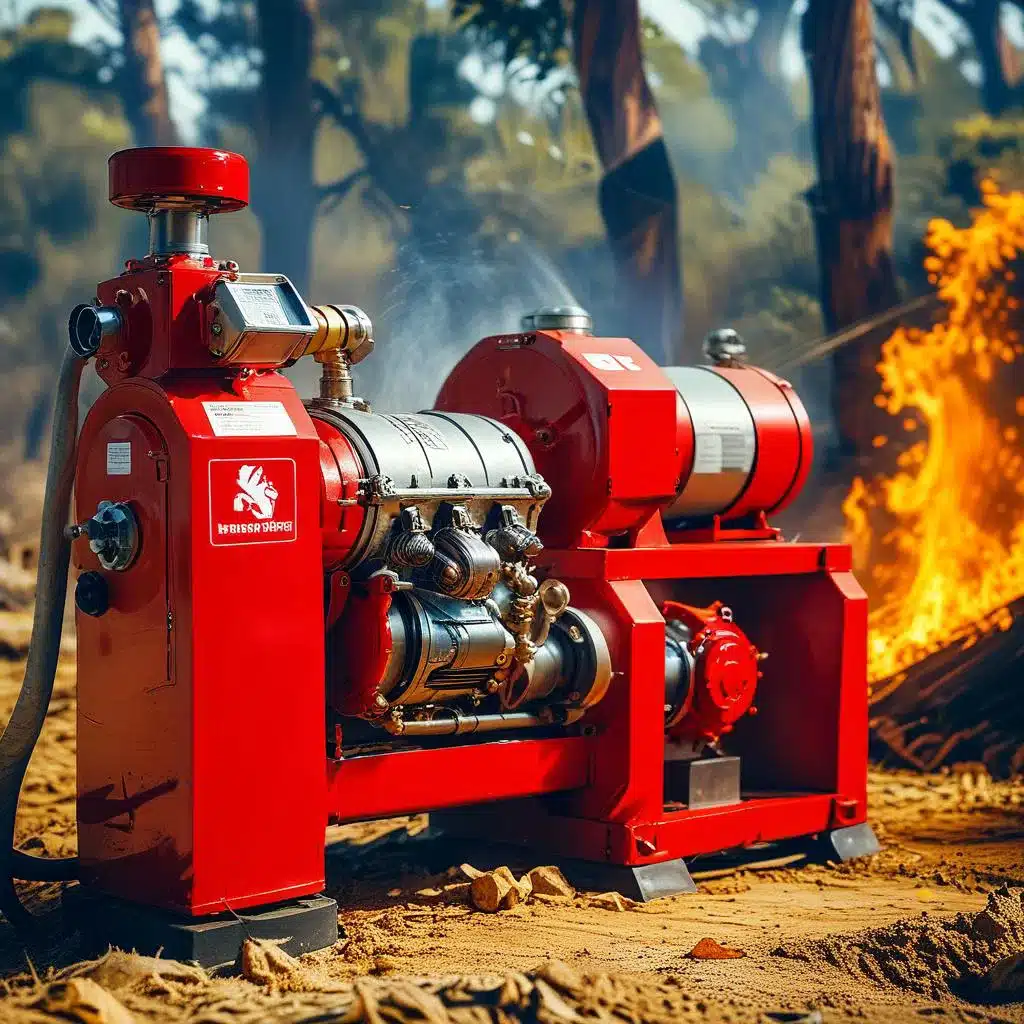Table of Contents
Bushfire season can be unpredictable, and preparation is key to keeping your property safe. Before purchasing a fire pump for bushfire protection, it’s essential to verify that the pump has adequate water pressure, reliable performance, and is the right size for your property’s needs. Choosing the right range of firefighting pumps can make all the difference when facing fast-moving flames.
Shoppers should pay close attention to pump capacity, engine type, and ease of use. For example, high-pressure fire fighting pumps are necessary for delivering effective water flow and coverage, so ensuring compatibility with hoses and fittings is also important. On the other hand, while portable pumps may provide convenience for smaller tasks, heavy-duty, stationary pumps are better suited for larger operations where high pressure and long-term reliability are important. Additionally, some models come with features like self-priming or quick-connect fittings, which can enhance ease of use and save valuable time during an emergency.
Key Takeaways
- Ensure the pump meets your property’s water pressure needs.
- Select a reliable, high-pressure model suited for bushfires.
- Pay attention to capacity and compatibility for best results.
Essential Factors to Check Before Buying a Fire Pump for Bushfire Protection
Selecting a fire pump for bushfire protection is a technical decision that depends on available water sources, the flow and pressure required, and the unique specifications of different firefighting pumps. Understanding these elements ensures the system will be effective during an emergency.
Water Source and Storage
The water source is fundamental. Homeowners should identify if a reliable supply exists, whether it be a dedicated water tank, dam, pool, or bore. If using a tank, the capacity must be sufficient to maintain consistent water pressure throughout an extended emergency. Water storage tanks should be evaluated for size, material, and accessibility. Plastic tanks may collapse from radiant heat, so metal tanks are preferred in bushfire-prone areas. Tanks should be fitted with a fire-fighting compliant outlet and dedicated suction line to the pump.
Position the fire pump as close as possible to the water source, reducing priming time and maximizing efficiency. Always check that the intake is kept free from debris and regularly maintained. A stable and accessible installation area helps during high-stress situations.
Required Flow and Pressure
The required flow rate—measured in litres per minute (L/min)—should match the property’s needs and local regulations. A typical home may require at least 400–600 L/min for adequate coverage, but larger properties or longer hose runs may need significantly more.
Water pressure, rated in kilopascals (kPa) or bars, must be high enough for effective delivery through hoses, sprinklers, or nozzles. Bushfire protection often demands high pressure and sufficient head height to reach all parts of the property—and to account for vertical lift from the tank to the highest outlet.
Additional Considerations for Effective Bushfire Protection
Selecting a fire pump is only part of establishing comprehensive bushfire defence. The suitability of the installation, its dependability in adverse conditions, and its compatibility with the property’s systems each play a direct role in effectiveness during an emergency.
Power Supply and Reliability
A fire pump is only as effective as its power source, especially during natural disasters, when the electrical grid may fail. Property owners should consider pumps equipped with petrol or diesel engines, as they do not rely on mains power to operate. Electrical pumps can be included, but only if they are connected to a reliable backup generator that can automatically activate during power outages.
Manual start pumps can be less reliable under stress, so models with electric or recoil start options provide added security. Keeping enough fuel safely stored for petrol or diesel units is critical. The unit should also be protected from radiant heat, ideally positioned and shielded to ensure uninterrupted operation during a bushfire. Routine testing and maintenance schedules are essential for ensuring the fire pump functions optimally. This includes running the pump under load, checking the fuel, and inspecting hoses and connections. Pumps that are not regularly tested may fail when needed most.
Integration With Property Systems
Proper integration with the property’s water infrastructure allows the fire pump to maximise bushfire defence. Fire pumps can be directly connected to fire sprinkler systems, standpipes, or dedicated irrigation lines designed to wet down vulnerable areas. For large residential or commercial properties, this integration should be professionally designed to ensure all zones receive adequate coverage. Connecting the fire pump to a static water supply (such as a water tank or swimming pool) significantly improves its functionality, as mains water may be unavailable during bushfires. Each connection should be fitted with bushfire-rated couplings and clearly labelled for quick access.
For sprinkler systems and irrigation, it is important to assess the required water pressure and flow rate. A mismatched pump may deliver insufficient water, undermining the effectiveness of defence measures. Documentation of how the entire network is laid out and operated is helpful for household members or emergency personnel.
Conclusion
Careful planning is essential before purchasing a fire pump for bushfire protection. Buyers should review pump flow rate, pressure capabilities, engine type, and compliance with local regulations.
Noise levels and reliability are also important considerations to ensure the chosen pump can perform effectively during an emergency. Reviewing key features and comparing models will help property owners select the best option for their needs.


